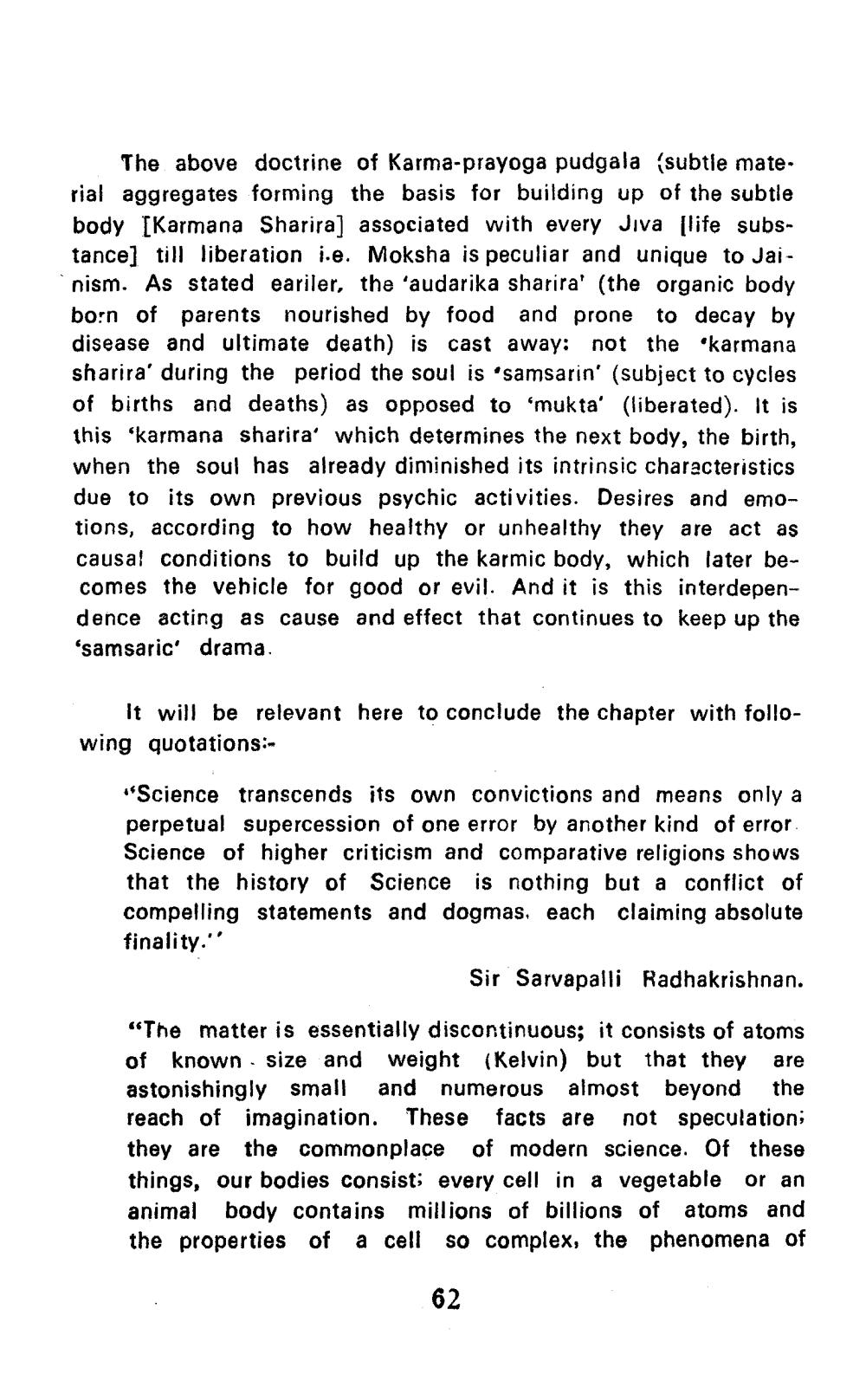________________
The above doctrine of Karma-prayoga pudgala (subtle mate. rial aggregates forming the basis for building up of the subtle body [Karmana Sharira] associated with every Jiva [life substance] till liberation i.e. Moksha is peculiar and unique to Jainism. As stated eariler, the 'audarika sharira' (the organic body bo:n of parents nourished by food and prone to decay by disease and ultimate death) is cast away: not the "karmana sharira' during the period the soul is 'samsarin' (subject to cycles of births and deaths) as opposed to 'mukta' (liberated). It is this karmana sharira' which determines the next body, the birth, when the soul has already diminished its intrinsic characteristics due to its own previous psychic activities. Desires and emotions, according to how healthy or unhealthy they are act as causal conditions to build up the karmic body, which later becomes the vehicle for good or evil. And it is this interdependence acting as cause and effect that continues to keep up the 'samsaric' drama.
It will be relevant here to conclude the chapter with following quotations:
"Science transcends its own convictions and means only a perpetual supercession of one error by another kind of error. Science of higher criticism and comparative religions shows that the history of Science is nothing but a conflict of compelling statements and dogmas, each claiming absolute finality."
Sir Sarvapalli Radhakrishnan.
“The matter is essentially discontinuous; it consists of atoms of known . size and weight (Kelvin) but that they are astonishingly small and numerous almost beyond the reach of imagination. These facts are not speculation; they are the commonplace of modern science. Of these things, our bodies consist; every cell in a vegetable or an animal body contains millions of billions of atoms and the properties of a cell so complex, the phenomena of




